Total talus replacement can be an alternative option for patients with avascular necrosis
The talus connects the foot to the lower leg and is crucial for foot and ankle mobility, but it receives a low blood supply compared to its neighboring bones — the tibia, fibula and calcaneus — resulting in difficult healing.
Total talus replacement is a new alternative surgical option for patients with avascular necrosis (AVN), a condition in which poor oxygenated blood flow causes eventual death of the bone.

Source: J. Kent Ellington, MD, MS, FAAOS
Treatment of talar AVN has historically been ankle and hindfoot fusion, which generally severely limits up-and-down range of motion in the ankle, as well as side-to-side range of motion in the hindfoot. This fusion procedure also has a higher risk of failing to properly fuse due to the lack of blood flow in the talus. Even with successful fusion, which helps alleviate pain, the lack of motion from fusing of the two joints may leave the patient with a suboptimal outcome.
The most common indication for total talus replacement is talar AVN. Other considerations for its use are patients who have ankle and/or hindfoot arthritis. In addition, the custom total talus implant can be built to match with the tibia component of a total ankle replacement prosthesis. Custom implants are relatively a novel technology and careful considerations are recommended. Restor3D, the company that produces this replacement option, can offer guidance and connect a potential surgeon with other surgeons who have experience planning and performing these surgeries.
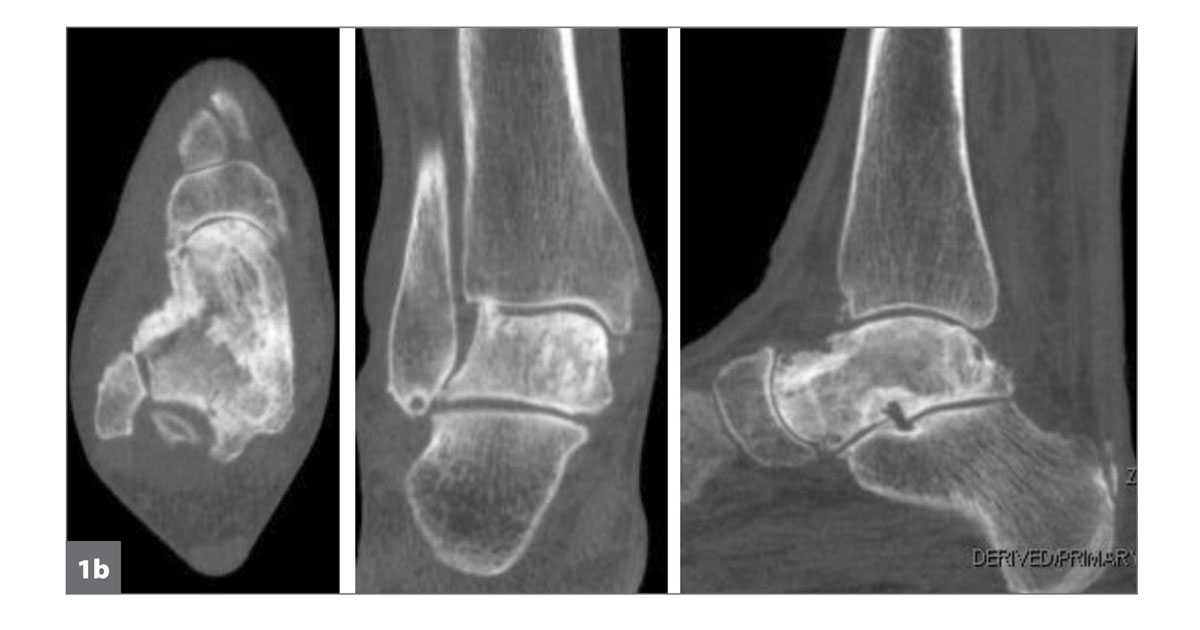
Other indications for custom total talus replacement, failure of previous total ankle replacement, talar tumor requiring talectomy and trauma with talar extrusion. Contradictions for custom total talus replacement include patients with prior infection, significant bone loss ankle/hindfoot deformity, neuropathy and uncontrolled diabetes.
Preoperative plan
The surgeon obtains standing three-view ankle radiographs and preferably standing CT scans of the affected ankle and also of the contralateral ankle (Figure 1). In the case shown, the patient was a healthy 69-year-old woman with talar AVN. The acquired images are sent to Restor3D, where the team builds a talar replacement design based on surgeon-directed goals. Conference calls take place between the company and surgeon. The surgeon is able to modify the design as needed. Once the surgeon approves the final design, the custom talus implant is 3D-printed from cobalt chrome, which has better joint wear characteristics than titanium. Three implants are created; one that is true to size, one that is 5% smaller than the first implant and one that is 10% smaller than the true-to-size implant. This process can be adjusted based on each clinical scenario and on surgeon preference (Figure 2). In addition, three radiopaque trials are created.
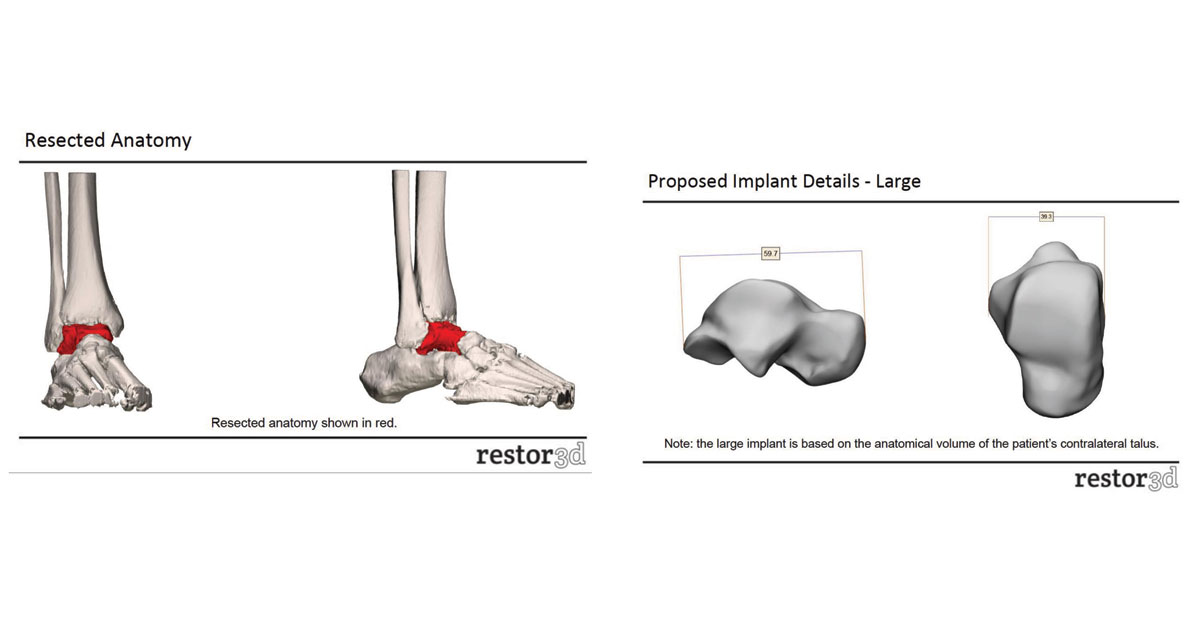

Surgical technique
An incision is made over the anterior ankle and the surgeon dissects down to the ankle joint, being careful to protect neurovascular structures. The surgeon should proceed through the floor of the extensor hallucis longus, maintaining the tibialis anterior tendon sheath. Next, the surgeon creates an arthrotomy of the ankle joint and exposes the talus. Using a saw, a complete osteotomy is made through the neck of the talus and the border of the body and neck junction, taking care not to penetrate the subtalar joint. The head and neck of the talus are removed. Using the saw, the surgeon makes two cuts in the sagittal plane through the talar body, dividing the talar body into thirds. In addition, another cut can be made in the axial plane to create six pieces. Next, using osteotomes, rongeurs, curettes and a pituitary, the talus is removed. It may prove difficult to remove the posterior pieces as these are adhered to the posterior ankle capsule. Once the entire talus is removed (Figure 3), the trials are inserted (Figure 4). The clinical fit, stability and range of motion are tested and intraoperative fluoroscopy is used. The appropriate 3D-printed implant is selected (Figure 5).
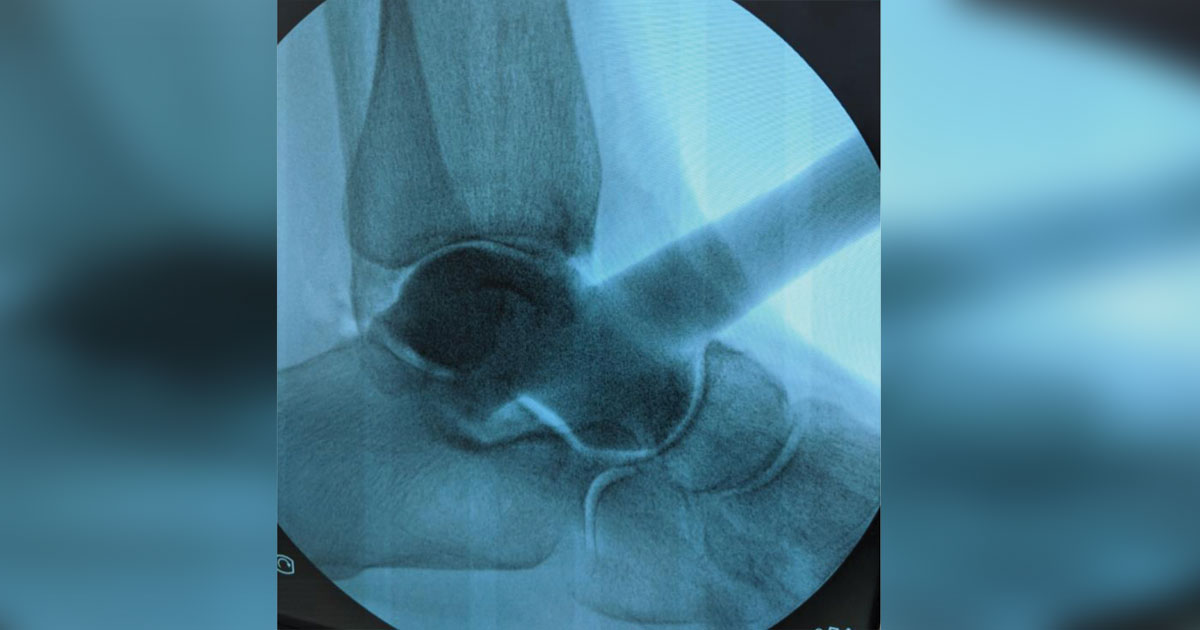
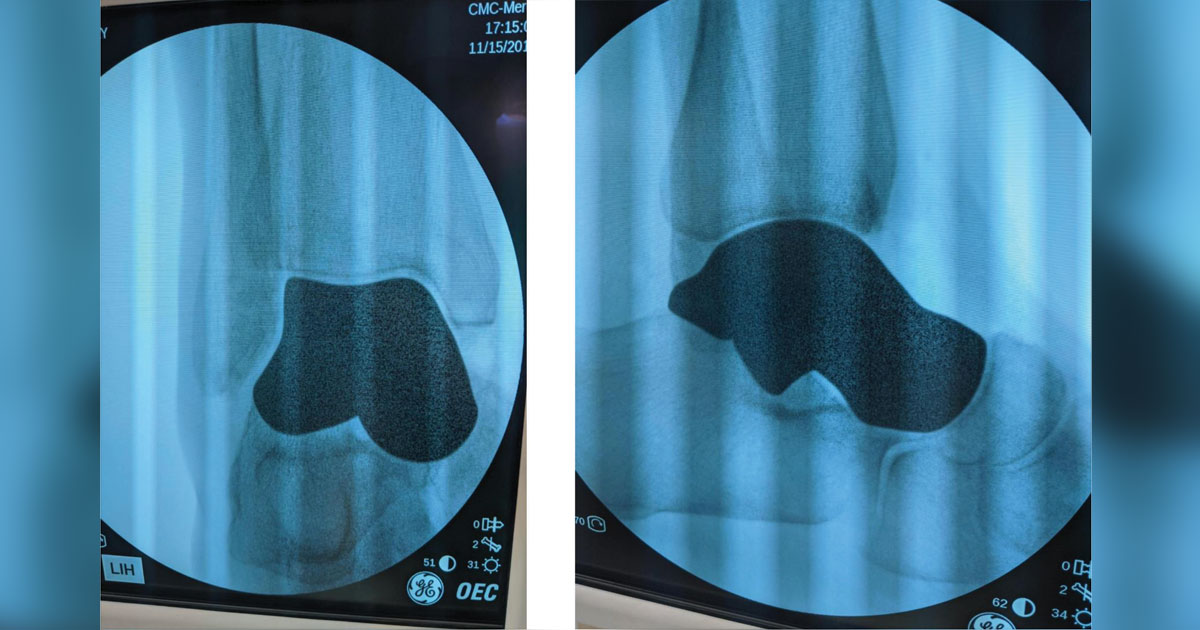
The wound is closed in a layered fashion and the patient is placed in a well-padded splint.
Postoperative plan
The patient is kept non-weight-bearing for 4 weeks. The patient returns for the first postoperative visit at 2 weeks for staple or suture removal, at which time three-view ankle radiographs are taken (Figure 6). A tall walker boot is provided, which is worn during sleep. The patient is enrolled in physical therapy, the focus of which is ankle and hindfoot motion, and swelling control. At 4 weeks, the patient begins weight-bearing in the boot and no longer needs to sleep in the boot. The patient returns at 8 weeks and begins using an ankle lace-up brace for another month, after which the patient is weaned off the brace. Additional follow-up visits are held at 3 and 6 months, and annually thereafter.
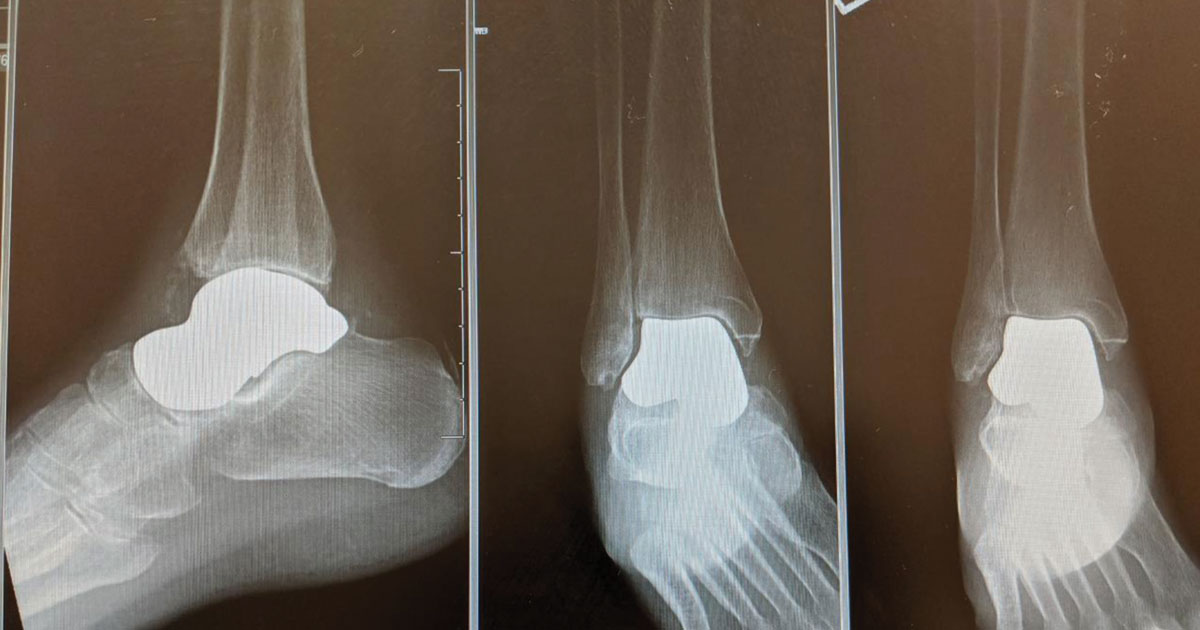
Minimal published series exist concerning total talus replacement. However, results of early studies and the good early outcomes demonstrate this as a viable alternative procedure for patients. Other custom total talus implants have been developed, made of other materials. Titanium, alumina and ceramic implants have been described in the literature. In this case, cobalt chrome was chosen because it has a long track record in orthopedics as a superior joint replacement material.
- References:
- Ando Y, et al. J Foot Ankle Surg. 2016;doi:10.1053/j.jfas.2015.07.015.
- Angthong C. Orthop Rev (Pavia). 2014;doi:10.4081/or.2014.5486
- Katsui R, et al. Foot Ankle Int. 2020;doi:10.1177/1071100719875723.
- Kurokawa H, et al. Bone Joint J. 2019;doi:10.1302/0301-620X.101B4.BJJ-2018-0812.R2.
- Papagelopoulos PJ, et al. Orthopedics. 2019;doi:10.3928/01477447-20190523-05.
- Ruatti S, et al. J Foot Ankle Surg. 2017;doi:10.1053/j.jfas.2017.04.005.
- Wagener J, et al. Bone Joint J. 2017;doi:10.1302/0301-620X.99B2.BJJ-2016-0504.R2
- For more information:
- J. Kent Ellington, MD, MS, FAAOS, can be reached at OrthoCarolina, 2001 Vail Ave., Suite 200A, Charlotte, NC, 28207; email: kentellingtonfx@gmail.com.







